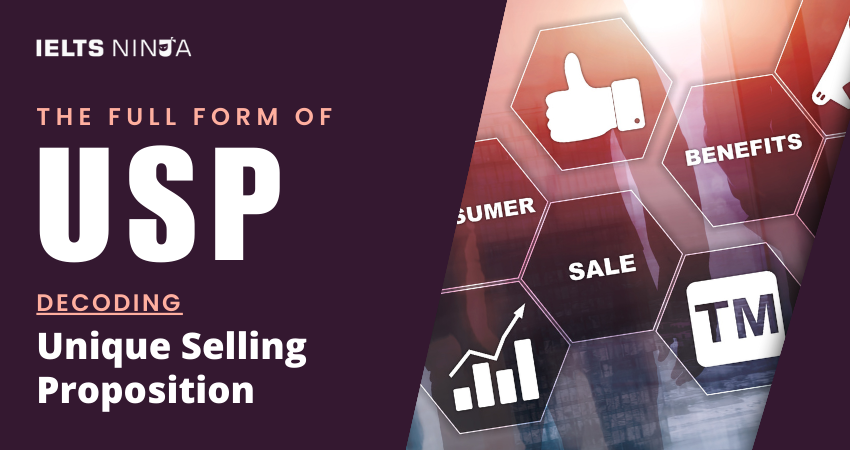The full form of USP stands for “Unique Selling Proposition”, and it is a marketing concept that refers to the distinctive qualities or characteristics that set a product, service, or brand apart from its competitors in the eyes of consumers. The USP is a critical element in marketing strategy, as it helps businesses differentiate themselves and communicate why their offering is superior or more desirable than others. In this guide, we will explore the details of USP, its importance, and how it is used in marketing. The following are the key details of Unique Selling Proposition (USP):
USP Definition:
A Unique Selling Proposition (USP) is a unique and compelling feature or benefit of a product or service that distinguishes it from competitors in a way that is meaningful to consumers.
Characteristics of a USP:
- Unique: The USP must be something that is distinctive and not easily replicated by competitors. It sets the product or service apart.
- Selling: The USP should focus on a feature or benefit that is relevant and persuasive to potential customers.
- Proposition: It is a clear and concise statement that communicates the unique advantage of the product or service.
Importance of USP:
- Competitive Advantage: A strong USP gives a business a competitive edge in the market by highlighting what makes its offering special.
- Consumer Appeal: A well-defined USP resonates with consumers and helps them understand why they should choose one product or service over another.
- Brand Positioning: USP plays a crucial role in shaping a brand’s identity and positioning in the market.
- Marketing Focus: It guides marketing efforts by providing a clear message and direction for advertising and promotional campaigns.
- Customer Loyalty: A compelling USP can build customer loyalty and drive repeat business.
Examples of USPs:
- Volvo: Safety: Volvo’s USP for many years has been the safety of its vehicles. It communicates that their cars are among the safest on the road.
- Apple: Design and Innovation: Apple’s USP revolves around its sleek and innovative product design. It conveys a sense of style and cutting-edge technology.
- FedEx: Overnight Shipping: FedEx’s USP is the promise of overnight delivery, emphasizing speed and reliability in shipping.
- McDonald’s: Fast Food and Convenience: McDonald’s USP centers on quick and convenient fast food options.
- Amazon: Wide Selection and Fast Delivery: Amazon’s USP combines a vast selection of products with fast and reliable delivery services.
Also Read: Best online IELTS coaching & training academy
Developing a USP:
- Market Research: Understand your target audience and competitors to identify gaps or unmet needs in the market.
- Unique Features: Highlight distinctive features or benefits of your product or service that are not offered by competitors.
- Consumer Benefits: Focus on how your offering solves problems or fulfills desires for consumers.
- Clear Communication: Craft a clear and concise USP statement that is easy for consumers to understand.
- Testing and Refinement: Test your USP with a sample audience and refine it based on feedback.
Using the USP in Marketing:
- The USP should be integrated into marketing materials, including advertising, websites, product packaging, and promotional campaigns.
- It should be consistently communicated to customers to reinforce the brand’s unique advantage.
Conclusion:
A Unique Selling Proposition (USP) is a powerful marketing tool that helps businesses stand out in a competitive market. It defines what makes a product or service special and communicates that uniqueness to consumers. A well-crafted USP can lead to increased sales, customer loyalty, and a strong brand identity in the minds of consumers.








